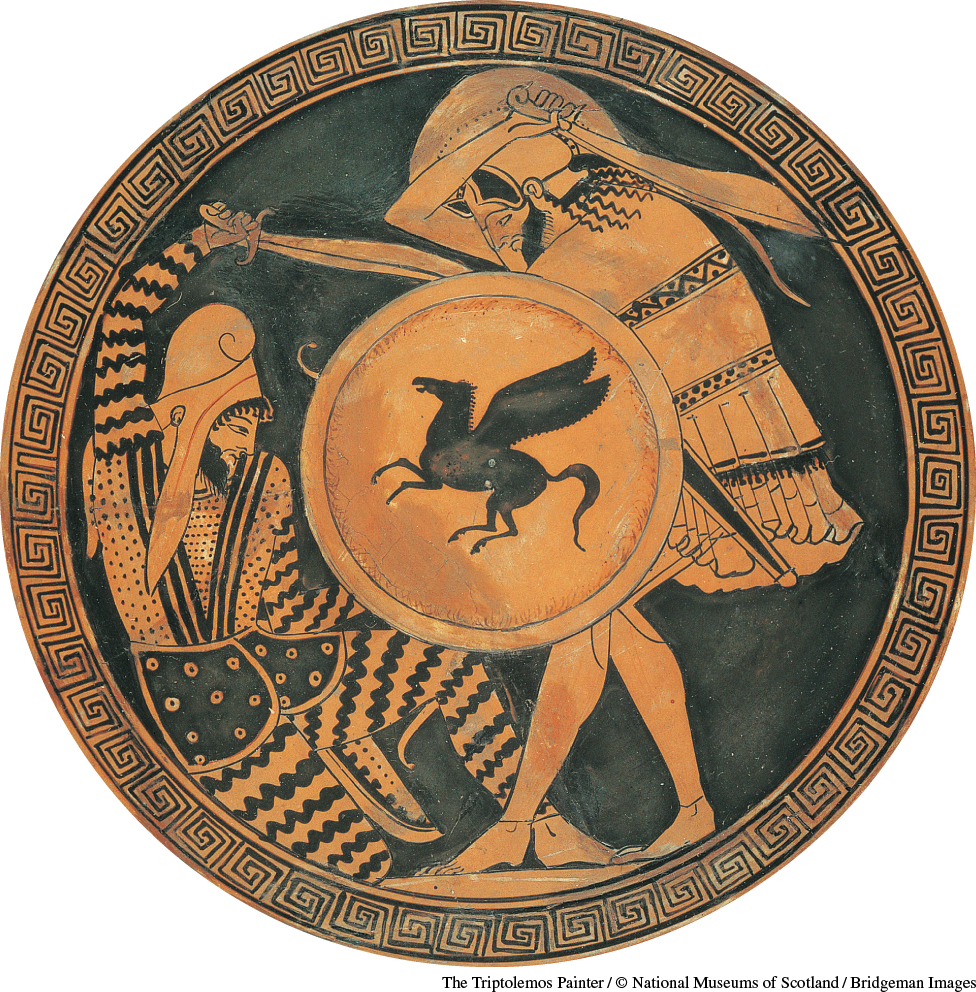Introduction for Chapter 3
Printed Page 76
Important Events
IN 507 B.C.E., ATHENS FEARED an attack from Sparta (its more powerful rival) and therefore sent ambassadors to the Persian king Darius I (r. 522–486 B.C.E.) to ask for help. Athens and Sparta so mistrusted each other that the Athenians chose to appeal to a foreign superpower for help against fellow Greeks. Darius’s representative asked, “But who in the world are these people and where do they live that they are begging for an alliance with the Persians?” Even so, the Persian king offered the Athenians help on his standard terms: that they acknowledge his superiority. Darius was eager to make more Greek city-states his subjects because their trade and growing wealth made them desirable prizes. The Athenian democratic assembly rejected his offer.
This incident reveals why war dominated Greece’s history throughout the fifth century B.C.E., first with Greeks fighting Persians and then with Greeks fighting Greeks. Conflicting interests and misunderstandings between Persia and Greece at the start of the century ignited a great conflict: the Persian Wars (499–479 B.C.E.), which culminated with Persia invading mainland Greece. Some Greek states temporarily laid aside their competition and united to defeat the Persians, surprising the world. In victory, however, they lost their unity and fought one another. Despite nearly constant warfare, fifth-century B.C.E. Greeks (especially in Athens) created their most famous innovations in architecture, art, and theater. This Golden Age, as historians later named it, is the first part of the period called the Classical Age of Greece, which lasted from around 500 B.C.E. to the death of Alexander the Great in 323 B.C.E.
New ideas in education and philosophy that were deeply controversial in the fifth century B.C.E. have had a lasting influence on Western civilization. The controversies arose because many people saw the changes as attacks on ancient traditions, especially religion; they feared the gods would punish their communities for abandoning ancestral beliefs. Political change also characterized the Athenian Golden Age. First, Athenian citizens made their city-state government more democratic than ever. Second, Athens grew internationally powerful by using its navy to establish rule over other Greeks in a system dubbed “empire” by modern scholars. This naval power also promoted seaborne trade, and profits from rule and trade brought Athens enormous prosperity. Athens’s citizens voted to use their revenues to finance new public buildings, art, and competitive theater festivals, and to pay for poorer men to serve as officials and jurors in an expanded democratic government.
CHAPTER FOCUS Did war bring more benefit or more harm—politically, socially, and intellectually—to Golden Age Athens?
The Golden Age ended when Sparta defeated Athens in the Peloponnesian War (431–404 B.C.E.) and the Athenians then fought a brief but bloody civil war (404–403 B.C.E.). The Peloponnesian War and its aftermath bankrupted and divided Athens.